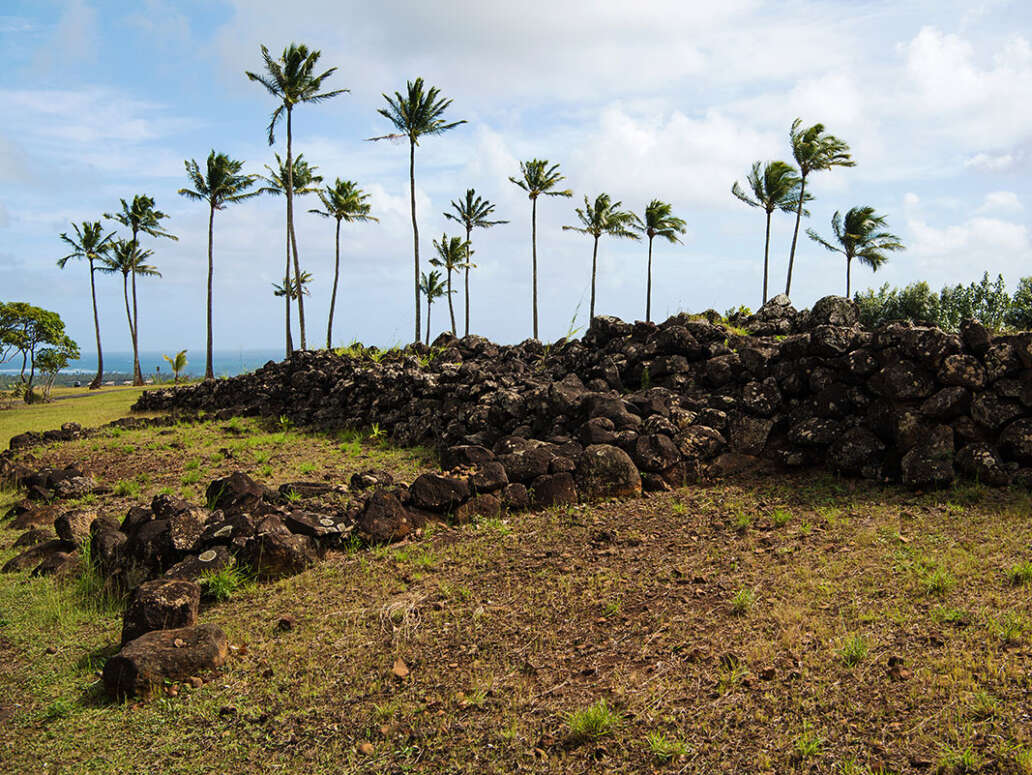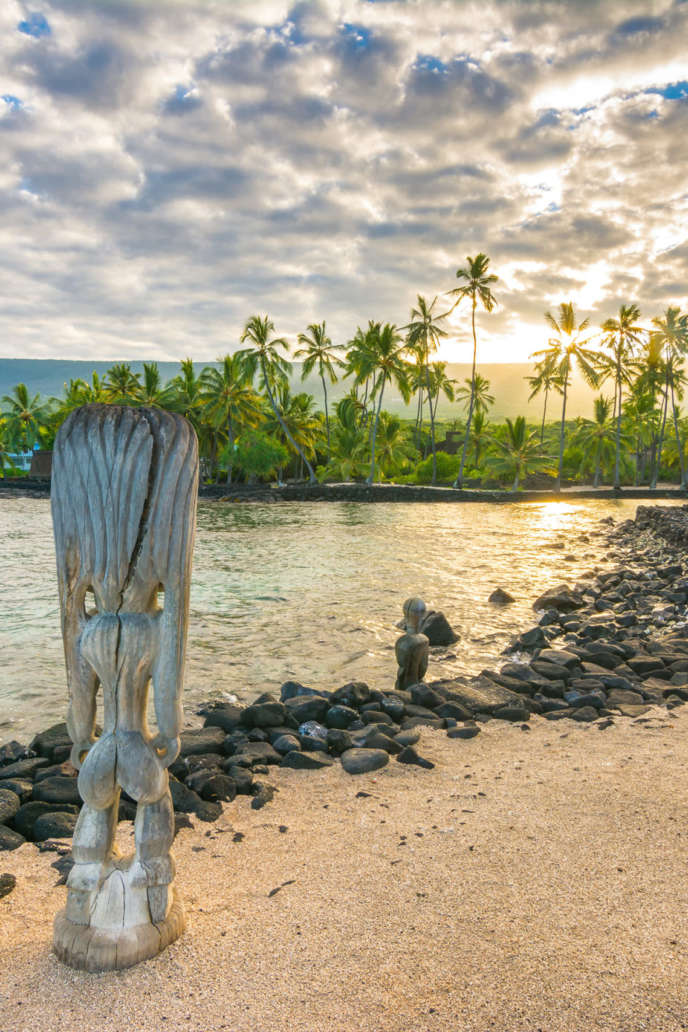Hawaii’s culture and history evolved separately from the rest of the United States, so it shouldn’t be surprising that there are social conventions and norms that you won’t find on the continent. Besides culturally sensitive issues, there are also conservation efforts in Hawaii that visitors should be mindful of, in addition to regular advice that every traveler should keep in mind. Let’s discuss more about Kapu and things not to do in Hawaii.
What is "Kapu"?

Throughout the islands, you might run into warning signs that say “kapu.” This Hawaiian word is related to “taboo,” a term found in various forms throughout Polynesia. The simplest definition of kapu is “forbidden,” but the root of the term has a deeper connection to Hawaiian history and culture.
Prehistoric Hawaii operated under a kapu system which was a universal code of law. The kapu system dictated everything from politics, to religion, to social and gender roles, to even how and what a person may eat. The highest penalty for breaking the most sacred kapu was a death sentence that could only be avoided by running to a pu’uhonua, or place of refuge. If the offender was able to reach the pu’uhonua before being caught, a kahuna would perform a ceremony purifying the offender of their transgression, granting them pardon and allowing them to return home safely.

The kapu system was abolished by King Kamehameha II, who broke kapu by eating with the women of his royal court. Under the kapu system, men and women were not allowed to eat together, so having the ruling monarch break kapu in this way effectively abolished the system for the entire kingdom.
Today, the word kapu is used to refer to things that people should avoid, whether or not it is part of Hawaii’s law.
Nature in Hawaii

Hawaii is blessed with one of the most biodiverse environments in the world. In addition to its rich tropical climate and varied geography, Hawaii is home to very few natural threats to human beings. A hiker in Hawaii doesn’t have to worry about mountain lions or poison ivy, for example, nor do residents have to worry about snakes or venomous insects.
In fact, Hawaii’s biosphere is so safe that the biggest threat to it is posed by human beings. Historically, human beings have brought a lot of threats to the indigenous creatures of the islands, from the first Polynesian settlers bringing pigs that dug up fragile plants, to later Western sailors bringing mongooses and mosquitoes.
Today, humans are still a real threat to the natural environment due to pollution, development, and simple negligence.
While there are major efforts being made to study and conserve Hawaii’s unique wildlife, every individual has a part to play in protecting the environment. Something as simple as properly disposing of your trash goes a long way in keeping the environment clean and habitable for all of Hawaii—whether plant, animal, or human.

In addition, be mindful of wildlife when out in nature: species such as the Hawaiian green sea turtle and Hawaiian monk seal are endangered, and must not be approached or disturbed, especially when resting.
In general, listen to and heed all instructions when doing nature tours, and be mindful of signs and warnings in your area.
Folklore

Like any other place, the locals of Hawaii have superstitions and folklore that inform what they can or can’t do. In Hawaii, a lot of this folklore comes from Hawaiian traditions and beliefs. There are a few superstitions that visitors should be aware of:
1. Don’t remove sand from the beach.
A small container of sand sounds like a cool souvenir, especially if taken from a black- or red-sand beach, but doing so is considered bad luck. Moreover, sand is a natural resource that takes years to form, so removing it harms the environment. Lastly, sand is coarse and rough and irritating and it gets everywhere, do you really want your “souvenir” accidentally popping open and spilling into the rest of your luggage?
2. Don’t take any lava rocks from Volcanoes National Park.
Removing lava rocks from the volcano is considered bad luck. The lava is property of Pele, and taking a rock for yourself is tantamount to stealing. Trust me, you don’t want an ancient Hawaiian goddess angry at you.
3. Don’t take any pork over the Pali.
If you’re on Oahu and want to visit the East side via the Pali Highway, make sure there isn’t any pork (or other pig-related meats) in your car before your drive. This piece of folklore is still commonly shared, but traces its root to Hawaiian legends. The Pali is the realm of Pele, goddess of lava, who had a turbulent relationship with Kamapua’a, the pig demigod. Since the two hate each other, bringing pig (representative of Kamapua’a) into Pele’s domain is sure to draw her ire. Again, you don’t want an ancient Hawaiian goddess angry at you.
4. Don’t bring bananas on a boat.
This one isn’t Pele-related. Probably. The myth is that bringing a banana on a boat will prevent you from catching any fish. There isn’t a single origin of this belief, but it seems to be present in some fishing communities outside Hawaii as well. Note that some fishermen also include banana-based products (chips, muffins), and a few even include anything with “banana” in the name—so avoid “Banana Boat” brand sunscreen if you plan to go fishing!
Most of the advice in this post boils down to one thing: respect.
If you show respect to the land and people of Hawaii, you’ll have a good time. But, if you don’t respect the culture, laws, or environment, you won’t have a good experience, and you’ll also be making the experience worse for every traveler that comes after you. You might be surprised at how different it is from continental US!
Final Thoughts
Is there anything else you want to know before your first trip? Are you visiting and curious about local customs? Sound off in the comments section; we’d love to hear it!
Coming to Hawaii or wanting to experience Hawaii virtually? Check out some of our many tour and activity options on HawaiiActivities.com!
Jason
Having grown up in Honolulu, Jason writes for HawaiiActivities to help share the beauty of the islands with visitors.





When returning to the mainland be sure to drink all the water in your souvenir water container BEFORE entering the TSA bag check or you have to go through bag check all over or have the choice to surrender the item, even if it is only partially full. They will not let you drink it right there.
The TSA must make a chunk of change on such items at their thrift store.
That’s not restricted to leaving Hawaii.
Flying from Oklahoma City to South Texas, TSA will not allow containers of water aboard flights.
But, you can purchase bottles of water on board your flight.
My daughter was told that this rule was because water and vodka so closely resemble each other, thay don’t want vodka brought aboard flights.
But, if your flight offers alcoholic beverages, you can purchase vodka, once your plane in in flight.
Makes sense to them… I guess.
ANY liquids, gels and spreadable items
in excess of 3.4 ounces cannot go through a TSA checkpoint. Terrorists have been know to make explosive devices that include a liquid, spreadable, or gel. Any thing that has less than 3.4 ounces can explode, BUT it’s not powerful enough to bring down a plane. All of the TSA screening procedures are to detect explosives, or someone that has recently handled explosives. In addition, weapons, things with a blade, ammunition are prohibited. Items that are not permitted to pass through a security checkpoint, may be packed in your “check-in luggage.”
Check TSA.gov or your with you airline before you travel, and save yourself a little heartache. WE DONT WANT ANOTHER “911” to happen. They’re just trying to put you on a safe plane folks@.😉
I remember someone telling me to squeeze the air out of my shampoo, conditioner, lotion etc. Since they didn’t tell me why I should do this I didn’t listen. We landed,got my luggage and when I went. To take a shower everything that was in a plastic bottle was on everything in my suitcase. Big mess.
When I worked on a boat, we talked a lot about the banana myth. I believe it is because the banana is the kinolau of Kanaloa (apparently, it is his male part…) so bringing a banana on a boat is almost like taunting Kanaloa… So this could be partially a source of the myth. Just a thought. I learned about that Kanaloa myth in a religion class, but am having a hard time finding any information about it online.
When I moved to the big island in 1995 I was invited on a dive boat. I didn’t know about the whole banana taboo for boats and after we had left the harbor and the crew noticed I had brought a couple bananas they kind of unloaded on me. How was I to know? Well, that day I saw my first hammerhead and first whale shark. I can safely say that the banana thing is something I don’t worry too much about.
Thank you for the guidance, it is much appreciated!
Aloha e Jason,
I have lived in Hilo for almost 9 years. And, I finally have a family member coming to visit from March 13th~27th 2023. (The kicker is that I am one of 82 grandchildren and we’re all from a little town in Northern Wyoming, not far (minutes) from Yellowstone National Park, where right now it is -23 degrees,)
I do not believe she’s been on a plane or seen the ocean ! She flies into Kona around 7:30 pm so we’ll spend the night in Kona so that she can see what everybody thinks ALL of Hawaii looks like. We will head back to Hilo taking the Hamakua coastline!! I wish I had a tour guide during her stay with me.
Any advice or ideas on how to get discount rates for sightseeing groups? I’ll be sure to tell what is kapu!
If you are familiar with The Big Island, I can send you some video/photos of the trip! Wanna take the trip with us? LOL Text/Call/Email me, anytime.
Mahalo for your time and advice~~
Suzanne
Hilo Bayfront USA
Hope you and your visitor had a memorable tour of the big island
I’ve worked for many years on shipping many of the things in Hawaii from the mainland. I can say without a doubt the people I’ve dealt with over there are the most lazy rude people I could ever imagine meeting. If not for mainlanders people of Hawaii would be third world